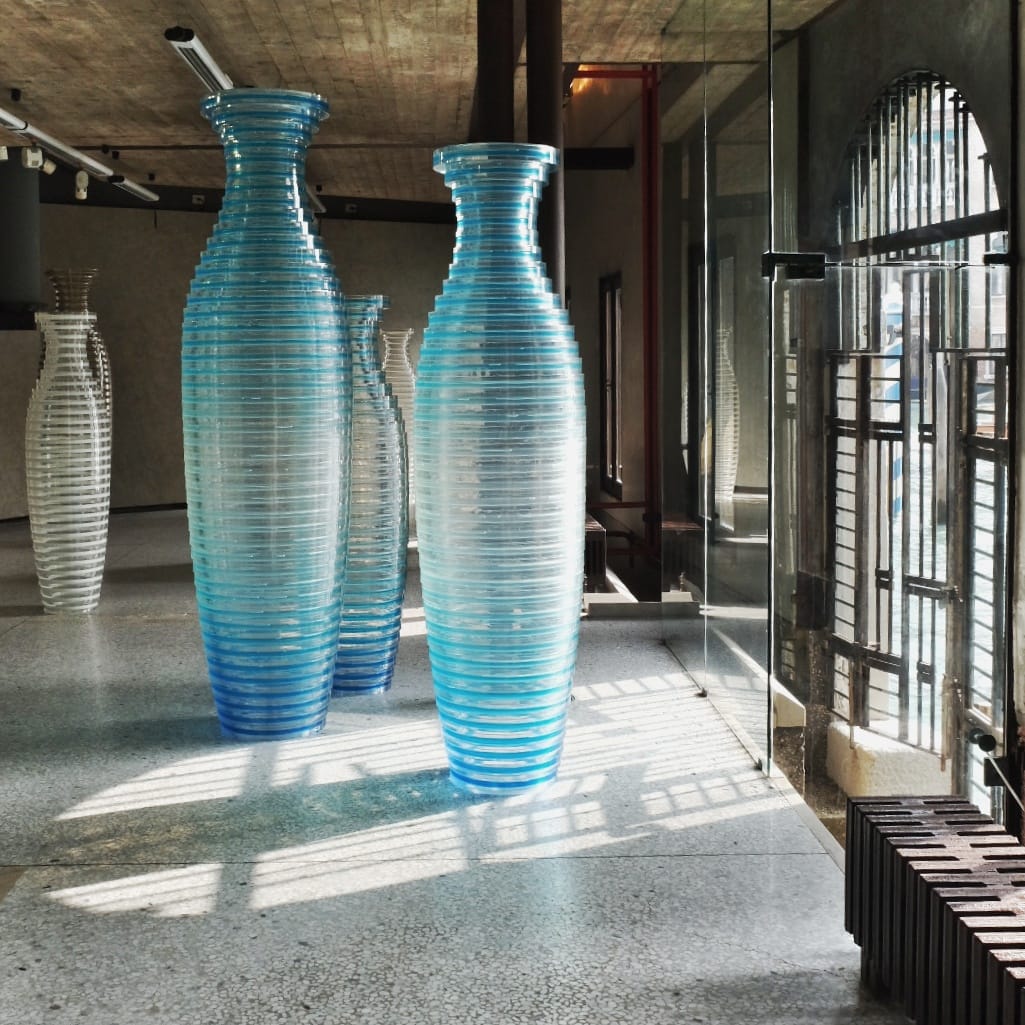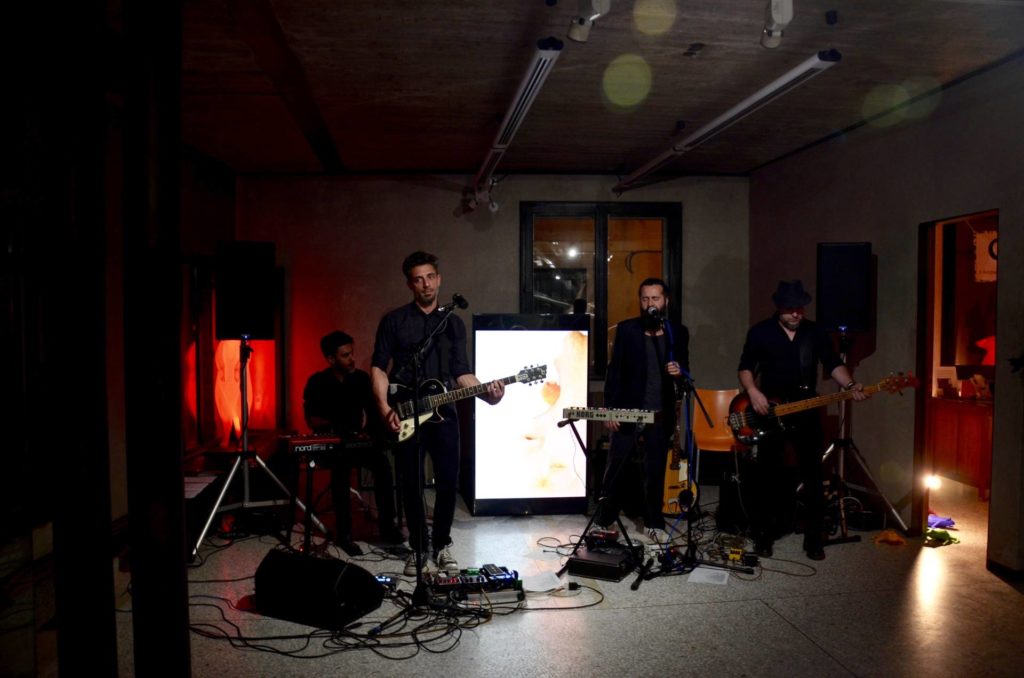The new art project which reflects on the contemporary urban and exhibition space conceived as a living and pulsating organism.
Throughout the seven months of the exhibitions, URBANIMAL hosted like a shelter the artistic sensitivity of some selected international artists who exhibited under the “environmental influence” of the silent and attentive city of Venice.
From the 11st of May the building of Fondazione Masieri became a real “artistic ecosystem” where the exhibition area was not only conceived as a part of the work of art, but also included the surrounding environment, even on a universal scale. The space on the ground floor has been turned into an “ideal room” where all the peculiar features of the area have been organically studied and mirrored the integration of visual art, design and architecture.


Meerkats as symbols/watchmen to carefully guard the Grand Canal (from which they’re observed too) in this project their presence suggests to the passer-by and the visitors to increase their own awareness towards the surrounding environment which deserves it. Meerkats represent a unique example of animal behaviour in the field of living beings. In URBANIMAL the Meerkats suggest the concept of “ecological space” where artworks, design objects and installations share the same delicate environmental system in a heterogeneous way.

“BRAMA RENAISSANCE”
ROBERT GLIGOROV solo exhibition

The snake, part of the sculpture from which this artwork has taken inspiration (“Laocoön and His Sons”, also called the “Laocoön Group”) is inspired by technology – here represented by the metal tube. This deeply perturbs the vision of ourselves and the surrounding world, avoiding us to embrace – although with desperation – the universe.
The tube comes out strenuously from the man’s forehead – more precisely from where the third eye is located –violently stopping the intuition of the cosmic whole. According to the ancient Indian Vedic texts, Indra kills the cosmic snake Vritra freeing a water flow and giving life to creation. Brahma, the creator god, produces this process through the water gush.
The priest Laocoön who is depicted in the classic sculpture is here represented by the tree hardly managing to face up to the assault of the sea snakes. His restrained pose, his real and absolute presence seem to be unable to warn us against modern nightmares (reborn Troyan horses).As a matter of fact the first outcomes of the global ecological catastrophe are already at the gates of our world.
Robert Gligorov has always conceived his work connected to plants, animal and human worlds since he calls them the great triad representing the trinity space-time-matter. They are immersed in an environmental system which is the integrated part of his artistic elaboration, so that it acquires a sort of sacral connotation.
Scarpa’s room completes and emphasizes the sensory perception of this artwork which becomes pure and absolute since invisible elements such as light, time and emptiness are highlighted.
Gligorov’s video-performance – “The Bobe’s legend” – is the symbol of the soul which soars through the air to generate another thought and another life. It marks -in a delicate and poetic way – the primordial bond among the living beings (in this case man and animal).
Two depictions of a distorted reality (vegetable/human/animal) complete the installation. The combination of space, time and matter is perceived through the loss of focus (blurry image).
The room in the Fondazione Masieri represents a sort of “ideal space” where the spatial references of the composition are repayed to the visitor reinterpreted through the powerful and imaginative plasma of the artist’s creation.
“UMBRA 5.1”
ALESSANDRO CIFFO solo exhibition
Soundtrack by the composer Antonio Moretti (Vicenza)

Until they ask him to do his own reinterpretation of the Eiffel Tower in silicone, Alessandro Ciffo will keep on experimenting and pushing the limits: infernal eruptions, the most delicate clouds, anything that he can make with this material that he has been shaping for over twenty years now. A material that isn’t just the medium for his artistic expression, it is his artistic expression itself. As I recall, I acquired my first piece in 2001, a tablecloth that I bought at Dilmos in Milan. That was just the first of the twenty or so Ciffo pieces I now have in my collection and every time that I set a table with that tablecloth it’s a special evening.
Venice is Venice, and no artist (or in this case no artist/designer) can fool around with this place. Here in the Palazzina di Fondazione Masieri where Carlo Scarpa left his unmistakable mark, Ciffo has landed. Brave as always, with a show of tall vases that opens on October 11th, 2019. The vases tower like proud, living creatures that are rearing up and dancing on a stage. The audience can’t help but be bowled over. The show is titled Umbra 5.1, where “umbra” is a play on the Italian word ombra and refers to the shadow that Earth casts when it orbits between the sun and the moon.
The pieces in Umbra 5.1 are different from the many others that I’ve seen over the years. Here it’s as if Ciffo were tip toeing through the rooms. Starting with the special silicone that he’s using here for the first time: the colors are softer and more harmonious, less pop than other pieces of his that I know so well because they are part of my daily life at home.
These pieces look like they are shot through with Venice’s own special light; it’s as if Ciffo were inspired by a poetic recall of Murano glass. His silicone has never been as close a cousin to blown glass as it is here: it’s just as shimmering, just as transparent and just as ever-changing in the light. It’s apparently fragile just like blown glass and naturally recalls Carlo Scarpa’s work.
But Ciffo’s work is different and unique because where blown glass was made in two separate and distinct phases- a first design phase where an artist like Scarpa planned and drew and a second executive phase where a team of glassblowers actually made the piece, perfectly timing their gestures to the temperature of the glass- Ciffo is different. As part of a new generation of artists, he does the entire project himself: it’s as if he were both the Carlo Scarpa and the team of expert glassblowers. From start to finish, he writes the script and does the show. Ciffo is both an artist and a warrior. Because he fights with his material with calibrated gestures, days and hours on end, putting his body into the battle but putting his soul into it even more. Because his soul moves his hands and his hands shape his material. I would like to spend a whole day with him at his studio in Biella like a fly on the wall, listening in silence as his fight produces poetry. Watching quietly as thousands of gestures combine to create a vase that can dance in the light. You’ll see what I mean at the show in Venice. Because only seeing is believing in this combination of strength and delicacy that is the purest expression of order and imagination.
Art criticism by GIAMPIERO MUGHINI
THE EVENT: VENICE ART NIGHT – 22/6/2019
